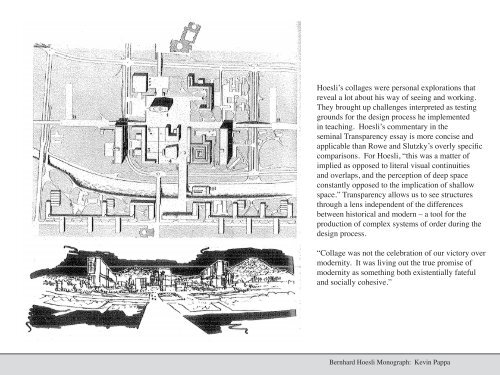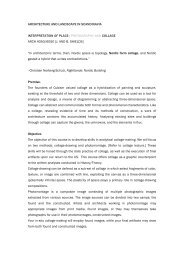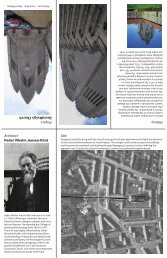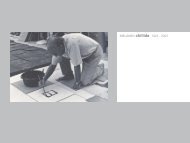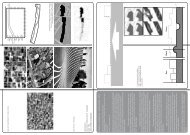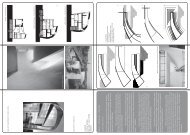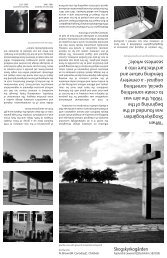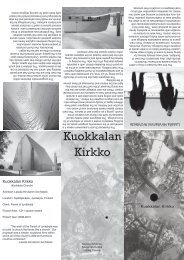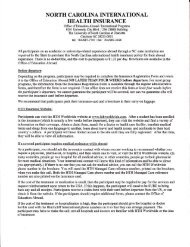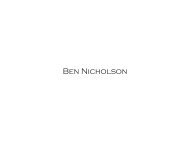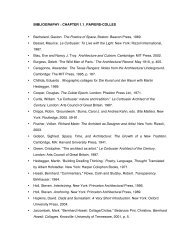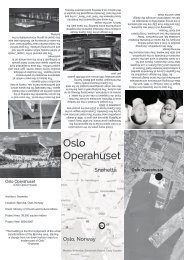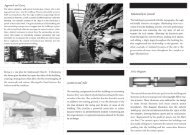- Bernhard Hoesli - collage and architecture
- Bernhard Hoesli - collage and architecture
- Bernhard Hoesli - collage and architecture
You also want an ePaper? Increase the reach of your titles
YUMPU automatically turns print PDFs into web optimized ePapers that Google loves.
<strong>Hoesli</strong>’s <strong>collage</strong>s were personal explorations that<br />
reveal a lot about his way of seeing <strong>and</strong> working.<br />
They brought up challenges interpreted as testing<br />
grounds for the design process he implemented<br />
in teaching. <strong>Hoesli</strong>’s commentary in the<br />
seminal Transparency essay is more concise <strong>and</strong><br />
applicable than Rowe <strong>and</strong> Slutzky’s overly specific<br />
comparisons. For <strong>Hoesli</strong>, “this was a matter of<br />
implied as opposed to literal visual continuities<br />
<strong>and</strong> overlaps, <strong>and</strong> the perception of deep space<br />
constantly opposed to the implication of shallow<br />
space.” Transparency allows us to see structures<br />
through a lens independent of the differences<br />
between historical <strong>and</strong> modern – a tool for the<br />
production of complex systems of order during the<br />
design process.<br />
“Collage was not the celebration of our victory over<br />
modernity. It was living out the true promise of<br />
modernity as something both existentially fateful<br />
<strong>and</strong> socially cohesive.”<br />
<strong>Bernhard</strong> <strong>Hoesli</strong> Monograph: Kevin Pappa


